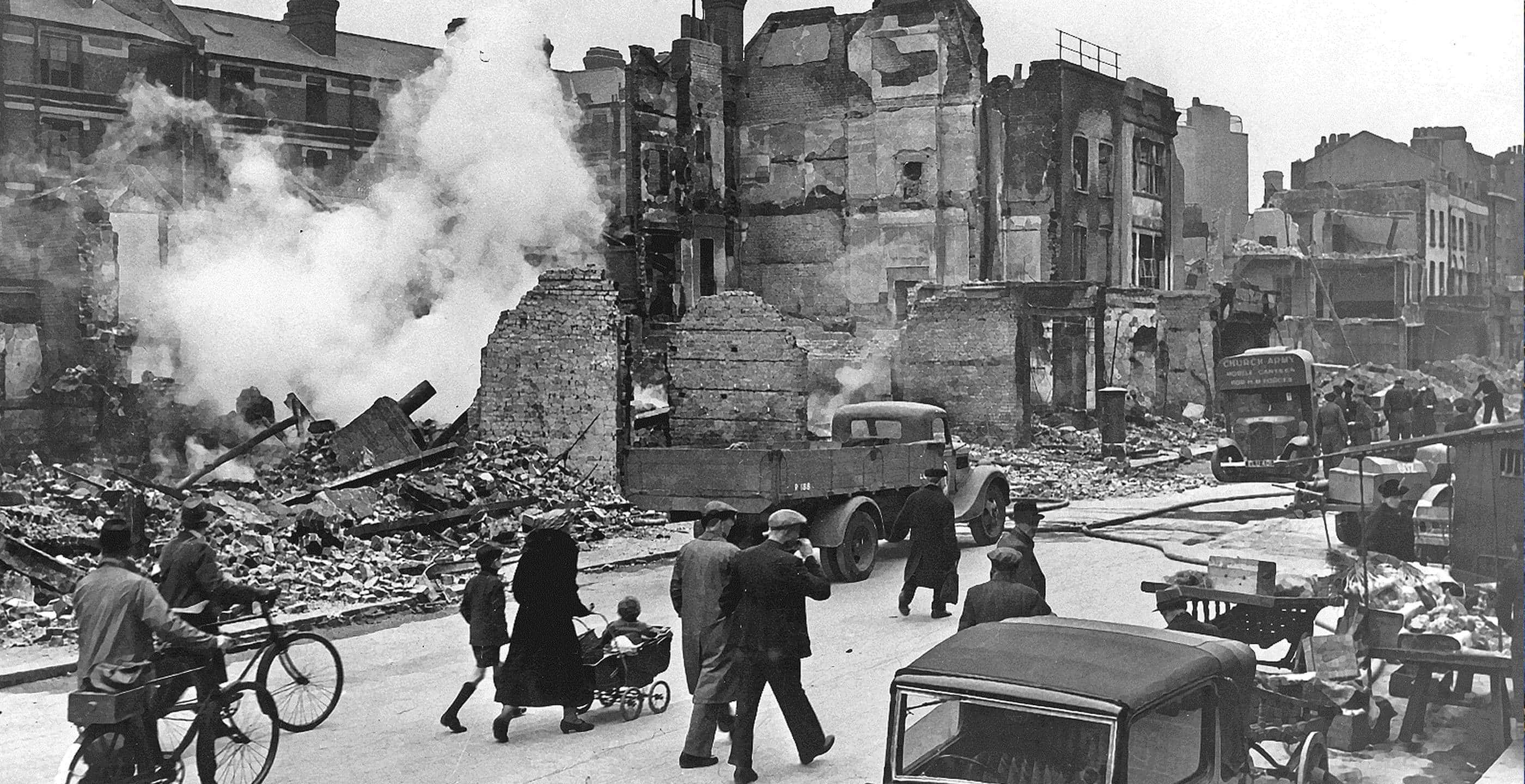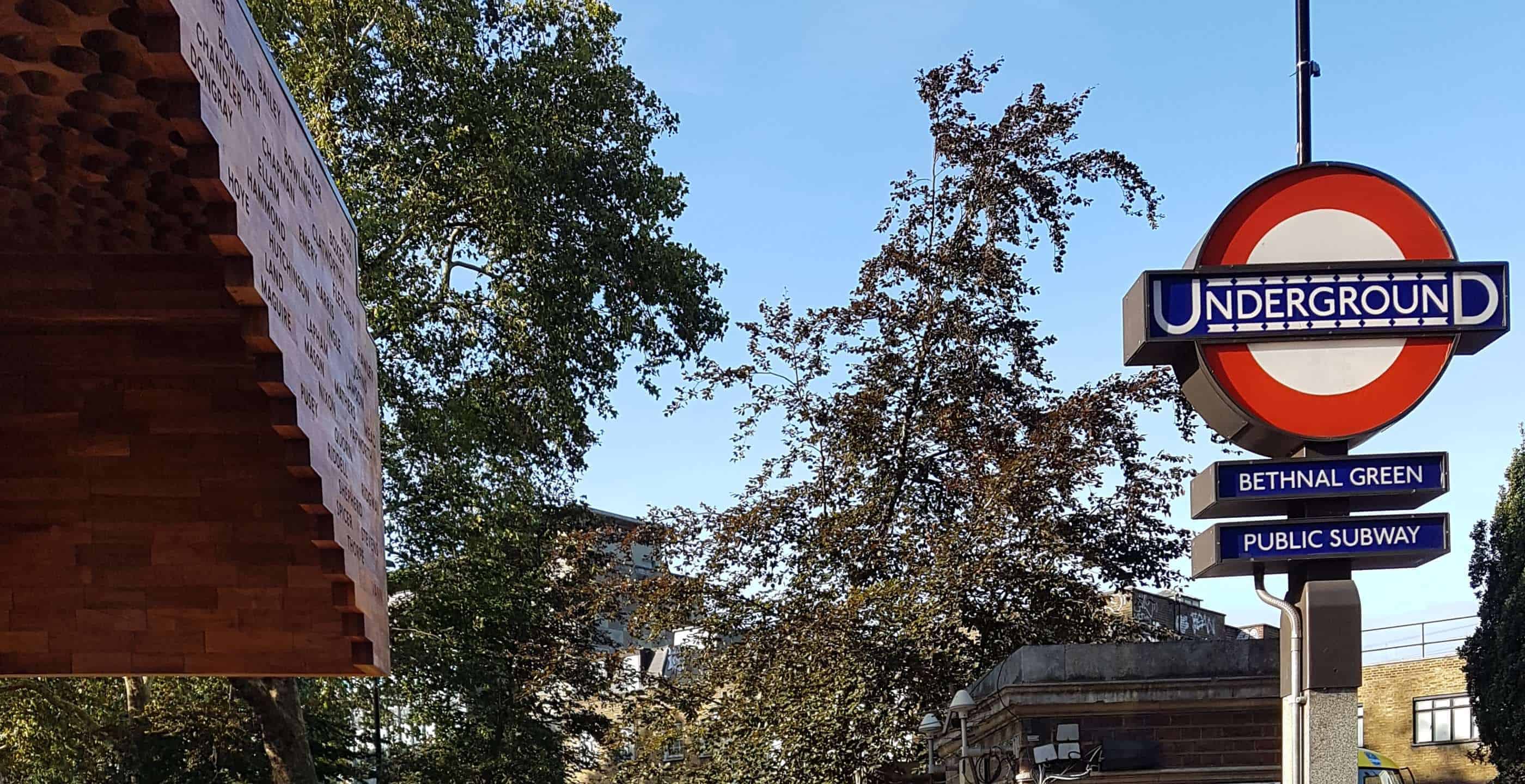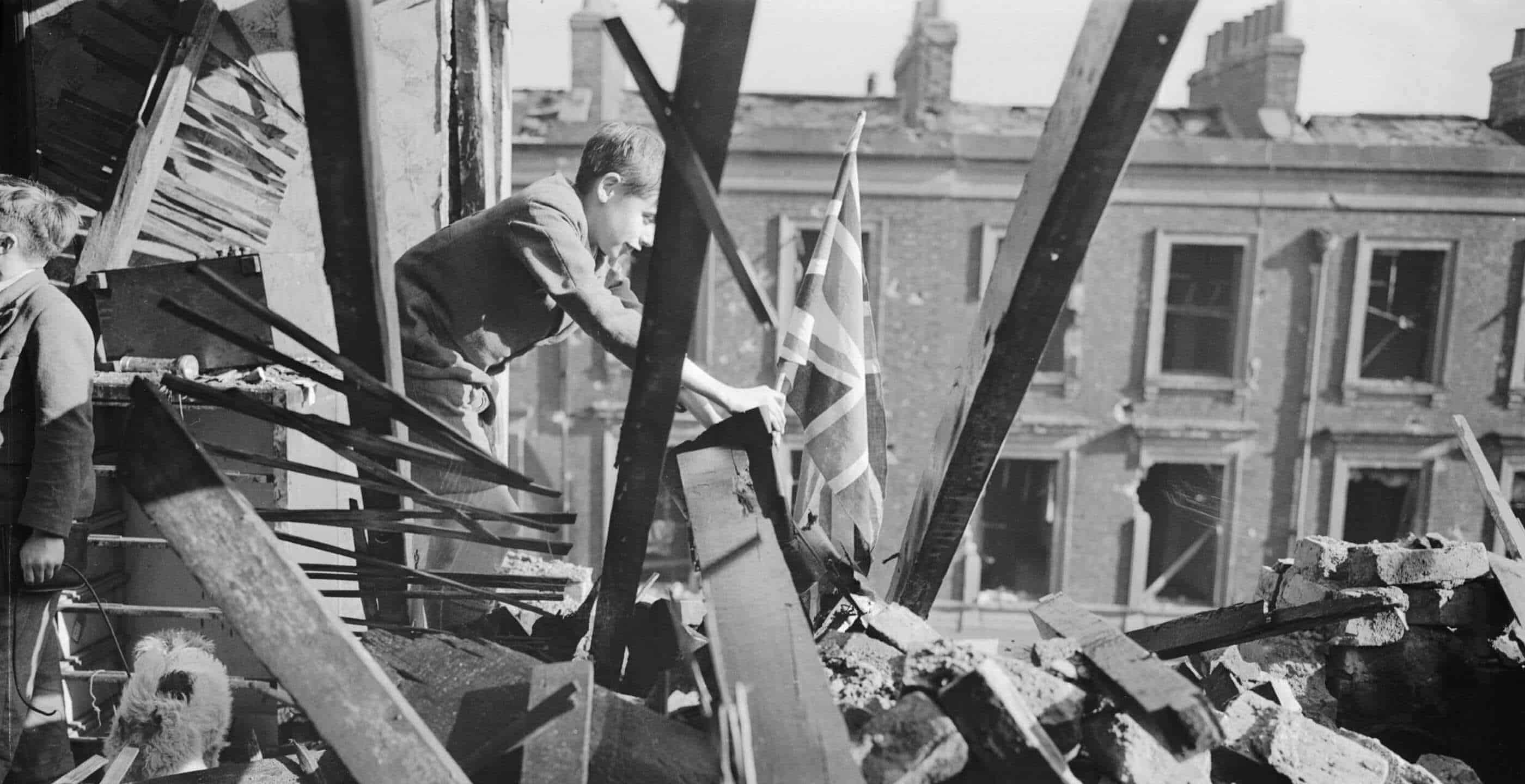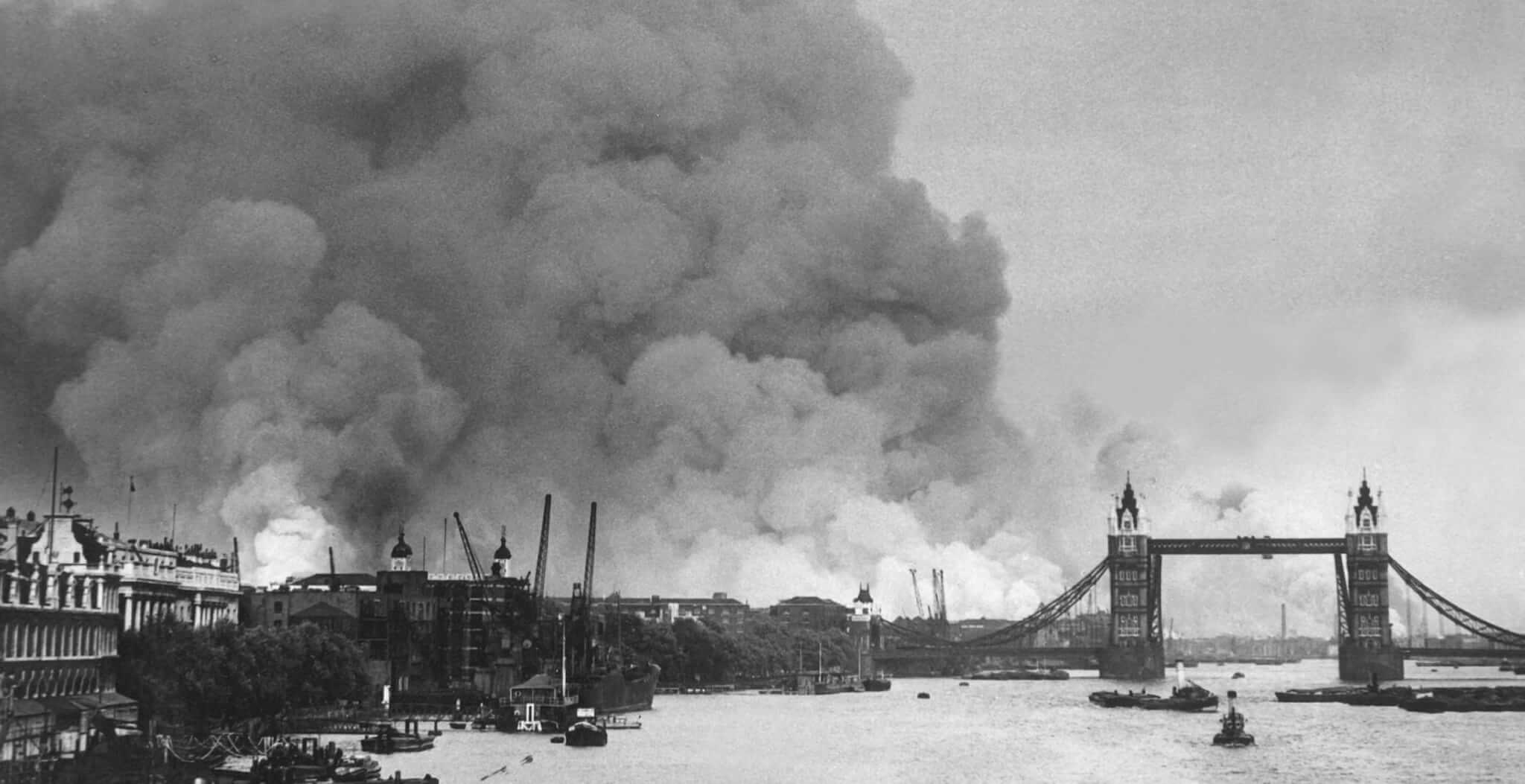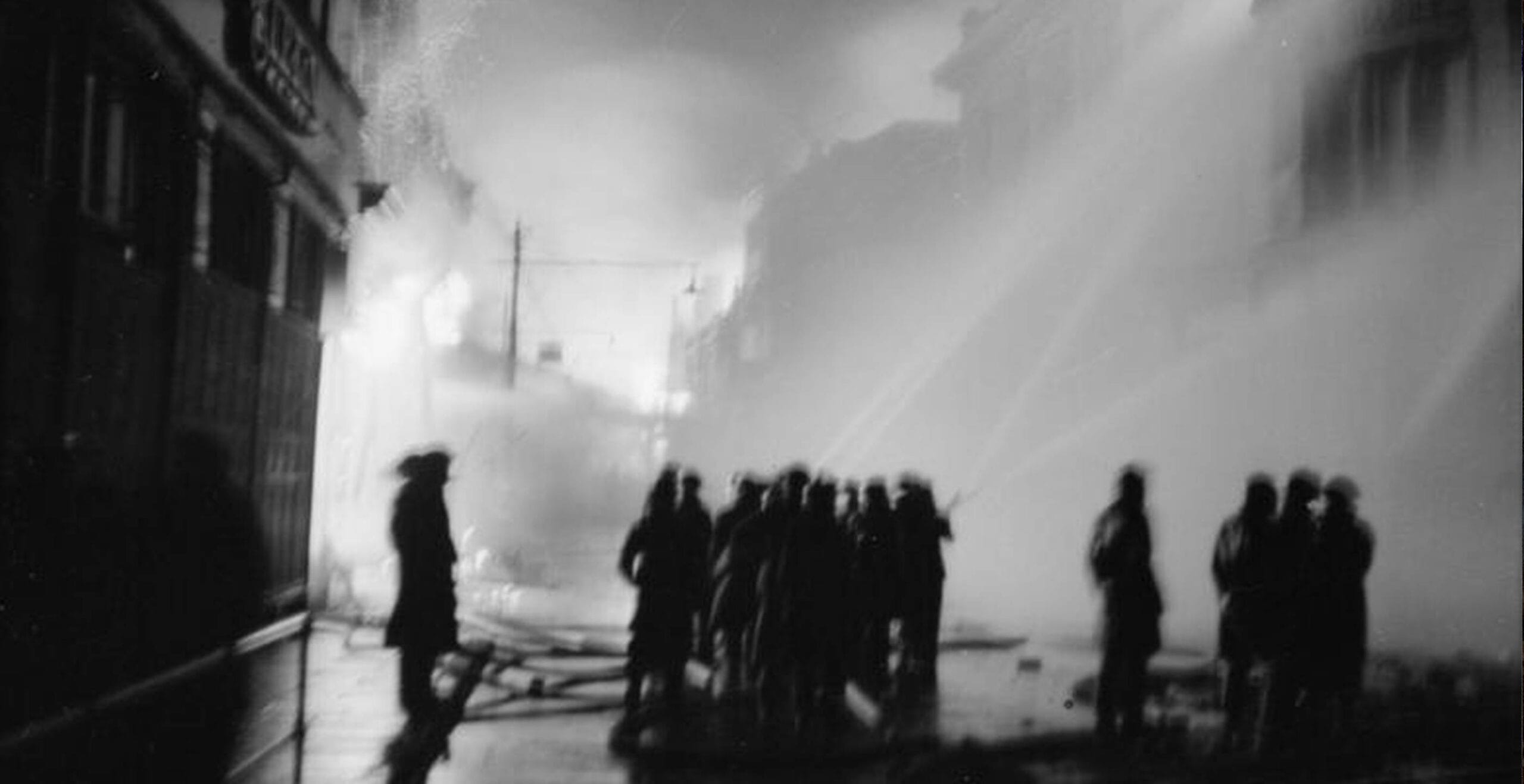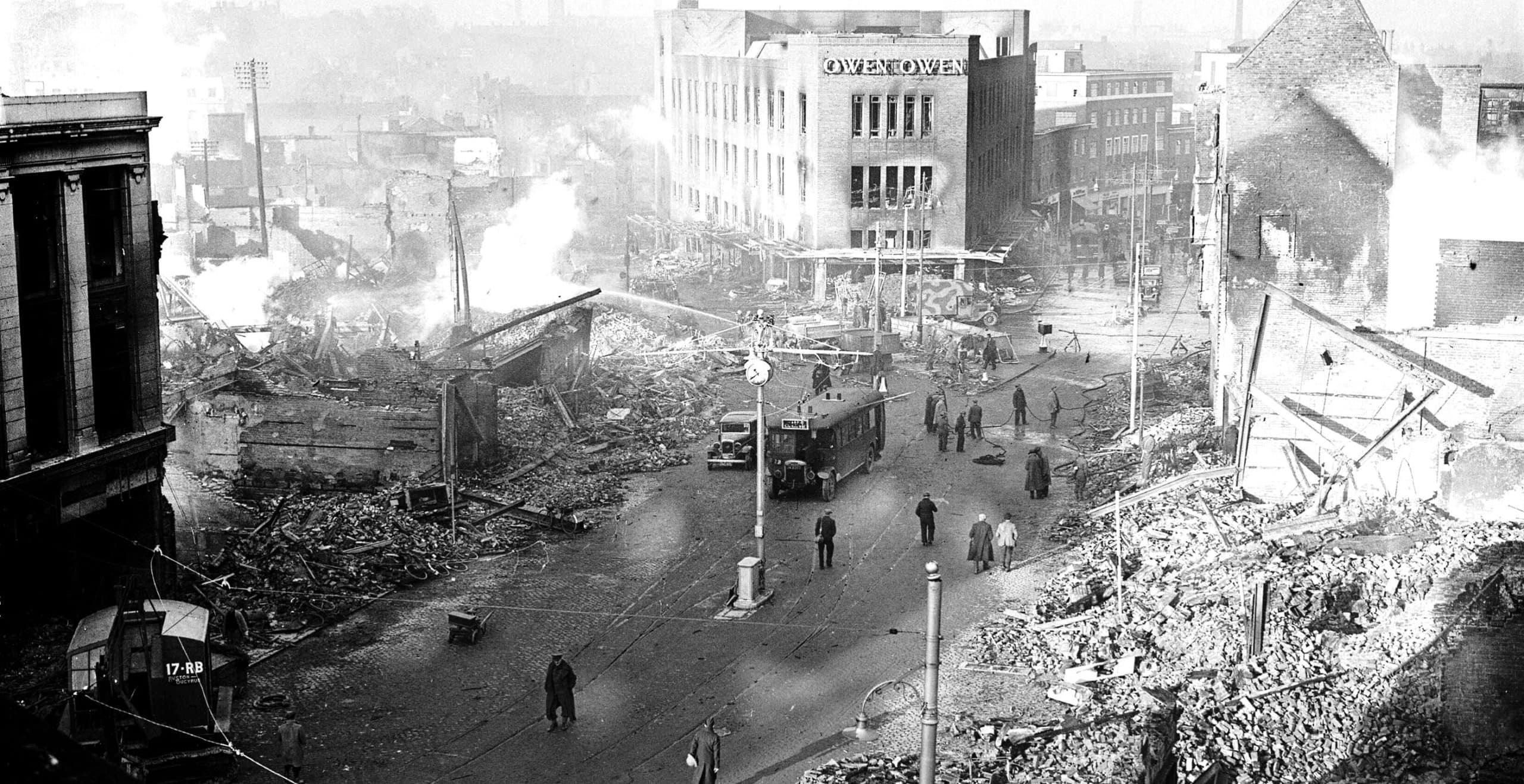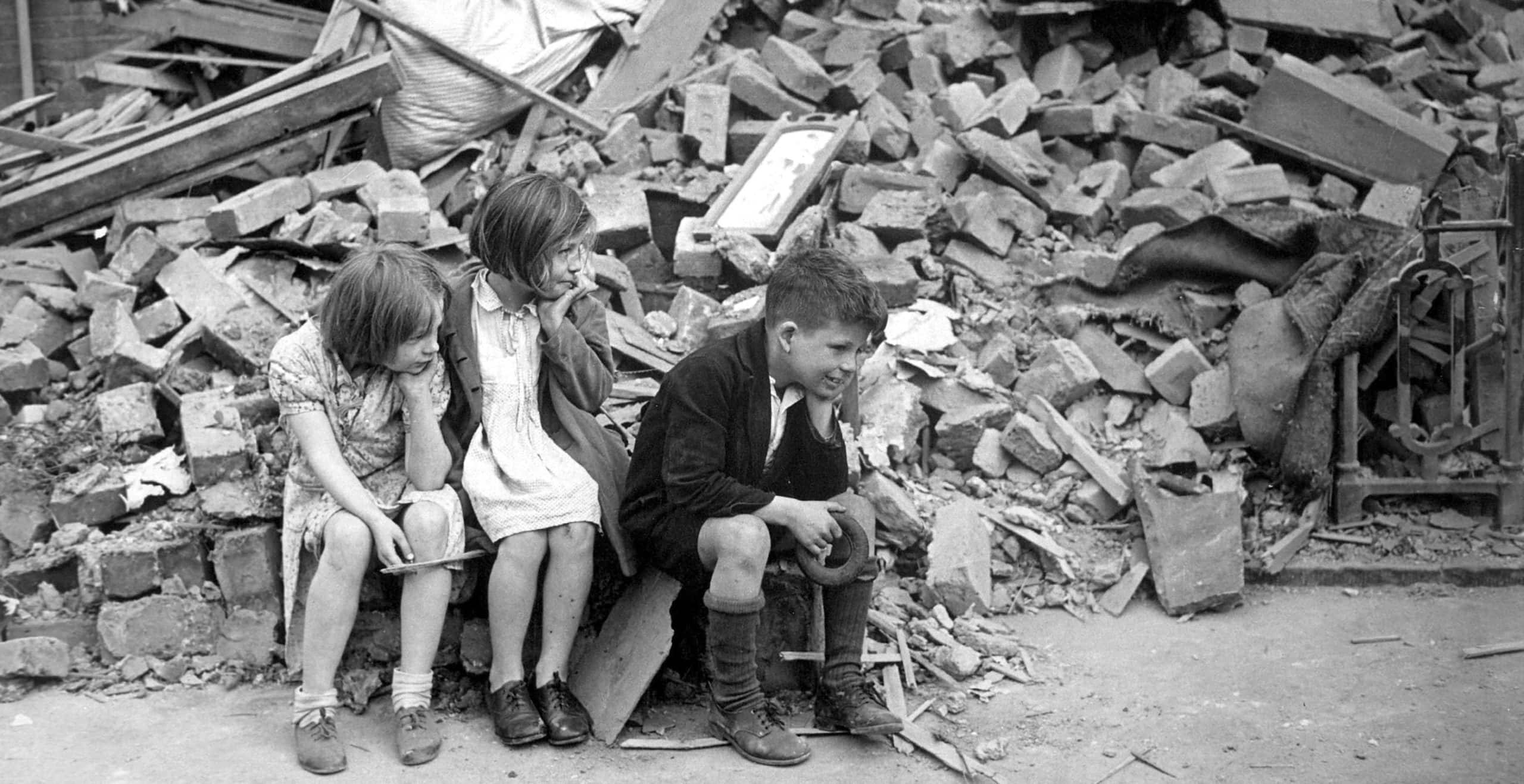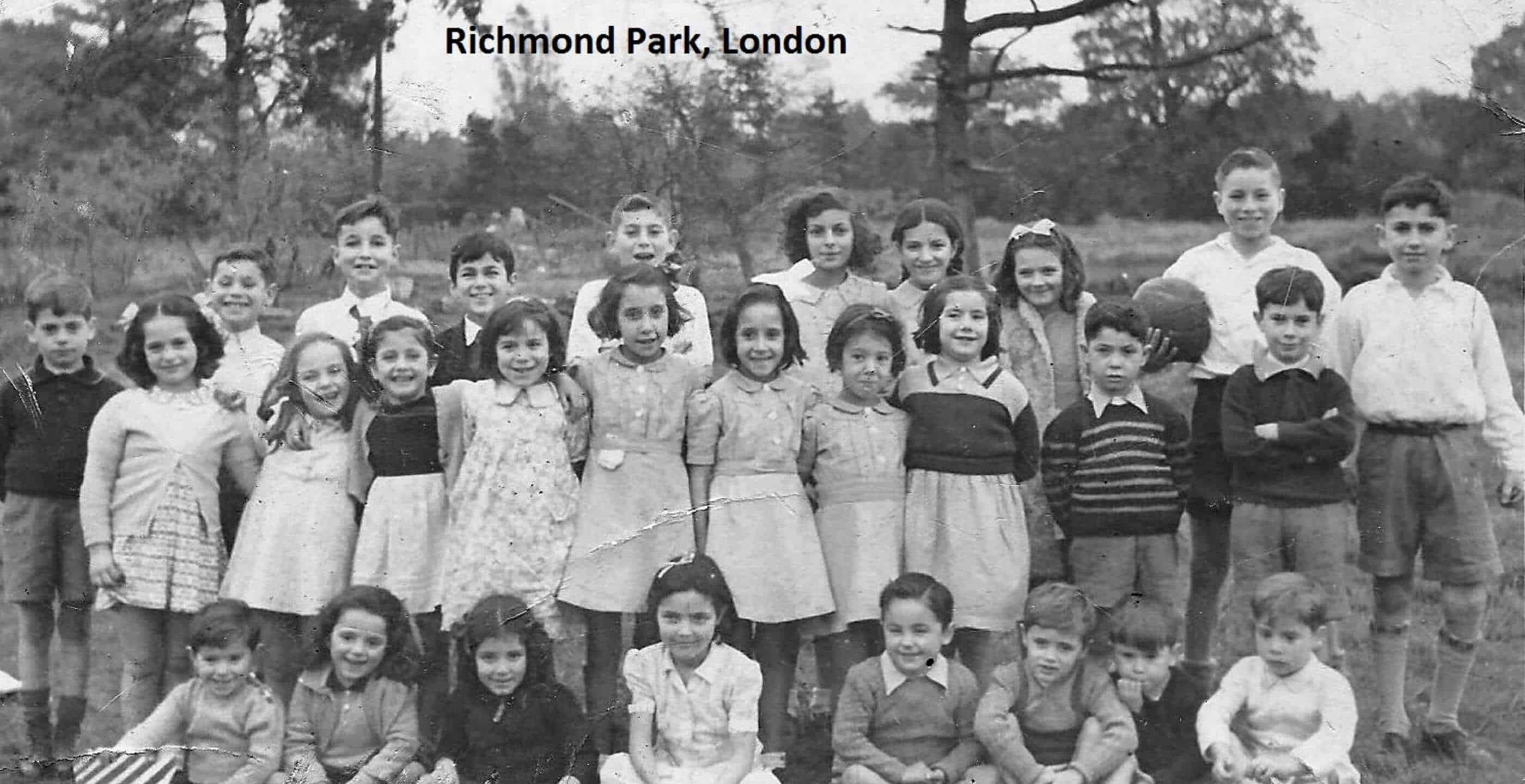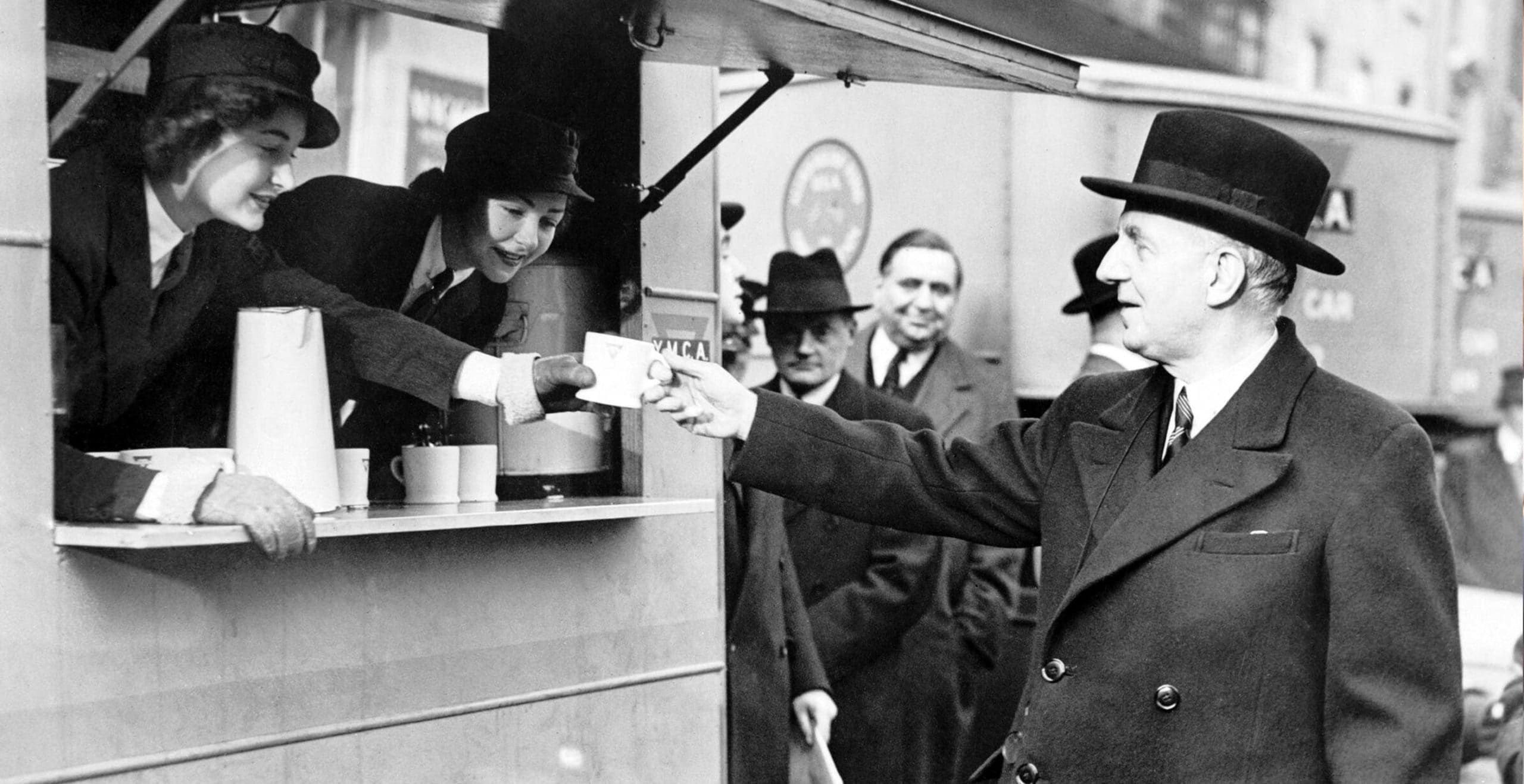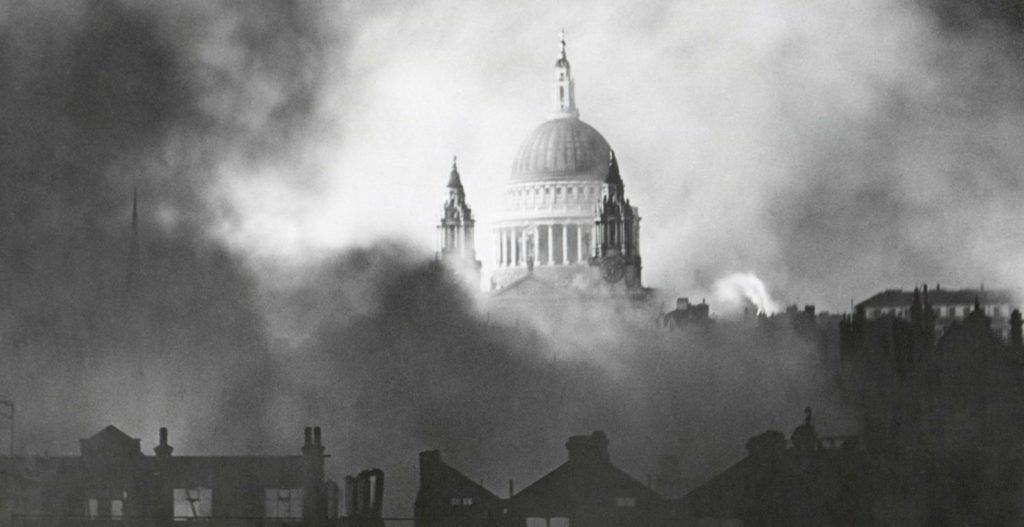Blitzkrieg – the lightning war – was the name given to the devastating German bombing attacks to which the United Kingdom was subjected from September 1940 until May 1941.
The Blitz as it became known in the British press was a sustained aerial attack, sending waves of bombs raining down onto British towns and cities. The attacks were carried out by the Luftwaffe and made up a larger campaign of attempting to destroy British infrastructure, cause devastation, destruction and lower morale.
Across the UK, towns and cities were subjected to the German bomber raids which, over the course of eight months resulted in 43,500 deaths of innocent civilians.
The planned campaign emerged from the failures of the German Luftwaffe during the Battle of Britain which played out in July 1940. The battle itself was a military campaign fought in the air whereby the Royal Air Force successfully defended the United Kingdom from Nazi air attacks.

In the meantime the Germans had been successfully marching through Europe, overpowering the Low Countries as well as France. Within this context, Britain was facing a threat of invasion, although seaborne attacks seemed unlikely as the German high command had assessed the difficulties of such an assault. Instead, Adolf Hitler had been preparing Operation Sea Lion as part of a dual attack by sea and air which was subsequently foiled by RAF Bomber Command. Germany instead turned to night-time bombing attacks in a tragic episode of history called the Blitz.
The lightning war began on what became known as “Black Saturday”, 7th September 1940 when the Luftwaffe launched its attack on London, which was to be the first of many. Around 350 German bombers executed their plan and dropped explosives on the city below, particularly targeting the East End of London.
In just one night, London suffered approximately 450 fatalities and around 1,500 injured. From this moment onwards, the capital city would be forced to become shrouded in darkness as the German bombers launched a sustained attack for consecutive months.
Nearly 350 German bombers (escorted by over 600 fighters) dropped explosives on East London, targeting the docks in particular. The intention was to completely destabilise the economic backbone of London which included docks, factories, warehouses and railway lines, in a bid to destroy and weaken the infrastructure. The East End of London was now a main target for incoming Luftwaffe attacks, resulting in many children across the capital being evacuated to homes around the country in a bid to protect them from the dangers of the Blitz.
Within weeks of the first bombing raid executed on London, the attacks turned to night time bombing raids, increasing the fear and unpredictability. This was not just a physical act of destruction but a deliberate psychological tool.
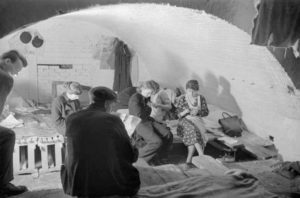
When the air raid sirens sounded, Lononders would often be forced to sleep in shelters, either in underground stations running throughout the city or Anderson shelters built at the bottom of gardens in case a public shelter could not be reached in time.
Anderson shelters were able to provide a certain level of protection as they were made by digging a large hole and placing the shelter within it. Made out of corrugated iron, the defence was strong and provided nearby shelter as time was of the essence in many cases.
As part of the wider programme of dealing with night time attacks, “blackouts” were subsequently enforced, leaving cities in darkness in an attempt to hinder the progress of the Luftwaffe in spotting their targets. Sadly, the bombs continued to rain down on cities around the UK.
In the eight month period of bombardment, the docks would become the most heavily targeted area for civilians living in fear of attack. In total it is believed that around 25,000 bombs were dropped on the Docklands area, a statement of German intention to destroy commercial life and weaken civilian resolve.
London would remain a primary target throughout this phase of the war, so much so, that on 10th to 11th May 1941 it was subjected to 711 tons of high explosives leading to approximately 1500 dead.
Across the country however, a similar picture was beginning to unfold as the Blitz was an assault on the entire United Kingdom. There were very few areas left unaffected by the devastation wrecked upon towns and cities up and down the country. The ominous sound of the air raid siren became a sadly familiar sound as it echoed through the streets warning the public of incoming dangers.
In November 1940, an offensive began against cities around the country, provincial or otherwise and areas where industry was believed to be. The only lull in attacks came in June the following year when the attentions of the Luftwaffe were drawn to Russia and new targets emerged.
In the peak of activity in November 1940, the Midlands city of Coventry was subjected to an horrific attack which resulted in huge loss of life and a complete destruction of infrastructure which would forever change the blueprint of the city. The medieval Coventry Cathedral was amongst the casualties on that fateful night on 14th November. The ruins of a once magnificent historic building were left behind as a poignant memory of the atrocities of war.
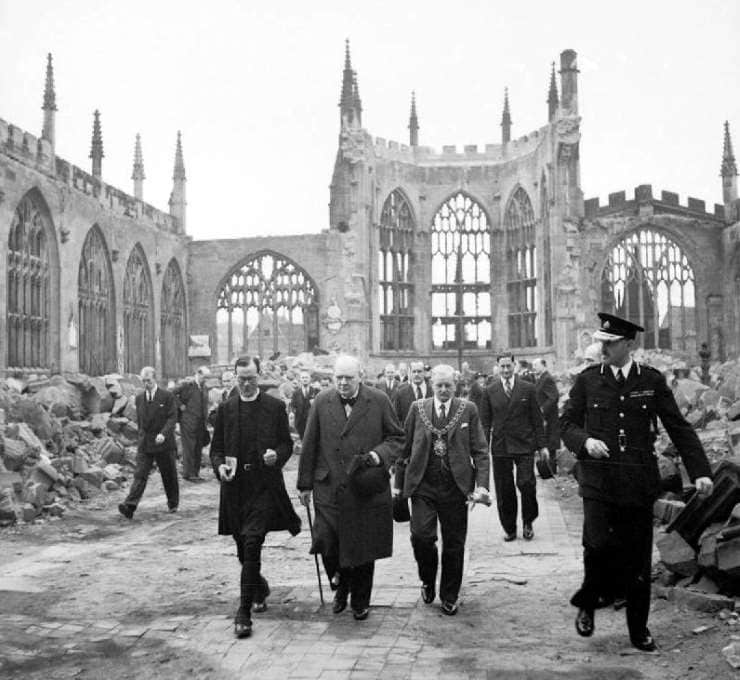
Such was the scale of the destruction suffered by the people of Coventry that a new verb was used by Germans from that night onwards, Koventrieren, a terminology used to describe a city raised to the ground and destroyed.
A similar picture of horror played out in other cities across the UK including Birmingham which was struck by raids in three consecutive months, successfully destroying a critical epicentre of industrial activity, the Birmingham Small Arms factory.
During the same year, it was Liverpool that would be the second most targeted area besides London, with the docks serving as the principle focus whilst the surrounding residential areas were left completely destroyed. In the first week of May 1941, the bombing in Merseyside had reached such proportions that the raids continued every single night, resulting in fatalities of up to 2000 people, not to mention the astronomical numbers of people made homeless.
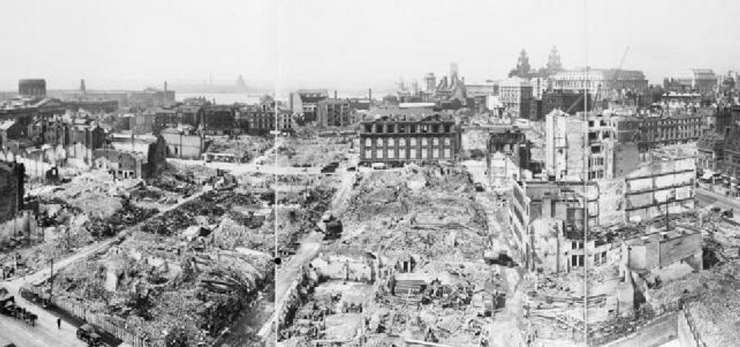
Meanwhile, in Manchester heavy raids were executed around the Christmas period with significant landmarks destroyed, including Smithfield Market, St Anne’s Church and the Free Trade Hall. Unfortunately many Manchester firemen were still fighting the inferno burning in Liverpool. As Merseyside was ablaze, the bright flames of wartime destruction provided a useful point of reference for the bombers making their way to Manchester.
Port cities and epicentres of industry were always the main targets during the Blitz, with a similar fate suffered by many locations across the UK including Sheffield, known for its steel production and the port of Hull. Other Luftwaffe attacks were launched on port cities around the UK including Cardiff, Portsmouth, Plymouth, Southampton, Swansea and Bristol. In Britain’s great industrial heartlands, the Midlands, Belfast, Glasgow and many others saw factories targeted and transportation lines disrupted.
Whilst eight months of bombing took its toll on the civilian population of Great Britain, it did not significantly hinder the functioning of the wartime economy. The continued bombing did not stop war production from continuing, instead the British were forced to carry out production in different areas whilst locations were rebuilt. The speed and organisation of the wartime effort was maintained against all odds.
 Wartime poster
Wartime poster
In light of this stoicism against the horrors of war, the “Blitz Spirit” emerged as a way to describe the characteristics of the British civilian population soldiering on in a crisis. No slogan better sums up this spirit than “Keep calm and carry on”. The desire to uphold a certain level of morale was the main aim of the game, to continue life as normal and follow procedure.
The efforts of the civilian population can thus not be underestimated as they played a crucial role in protecting and rebuilding their cities. Many organisations such as the Auxiliary Fire Service and the Women’s Voluntary Services for Civil Defence played a vital role in keeping things moving in a time of great upheaval.
By May 1941, night time attacks were decreasing as Hitler turned his attention elsewhere. The Blitz had become a period marred by destruction, death, casualty and fear, but it did not lessen the resolve of people or crucially destroy wartime production.
The Blitz will forever be remembered as a crucial episode of the Second World War, a time when people needed to stick together, help each other and resolve to continue life as best they could. This is why the Blitz remains a vital part of British and global history and will be remembered for many years to come.
Jessica Brain is a freelance writer specialising in history. Based in Kent and a lover of all things historical.
